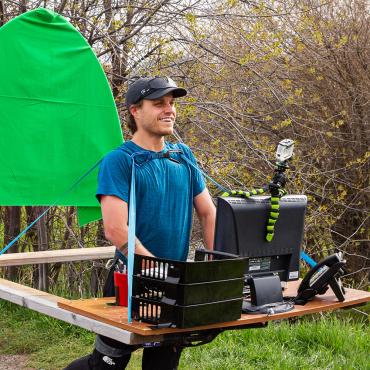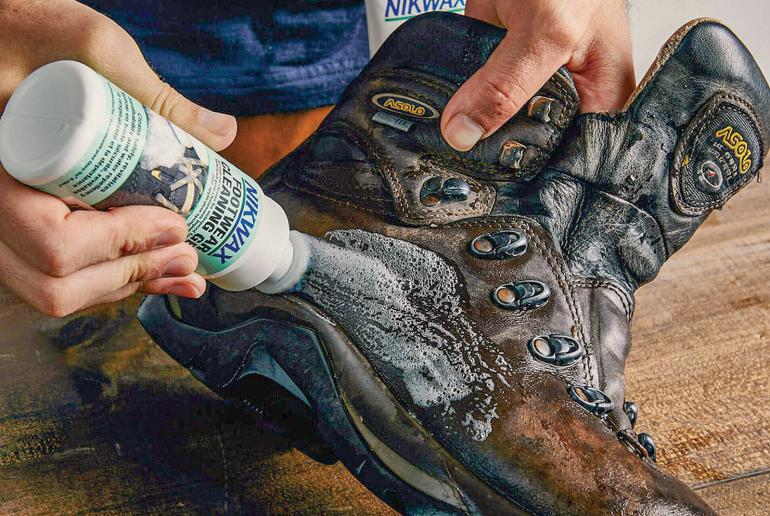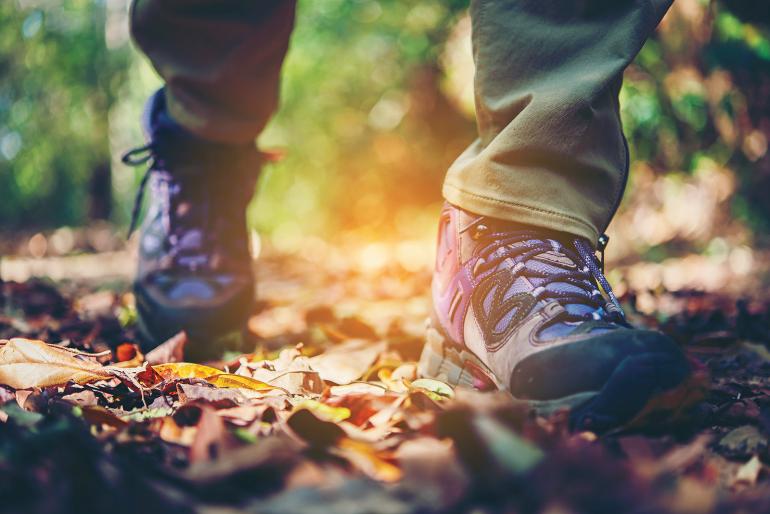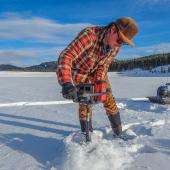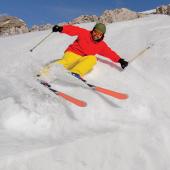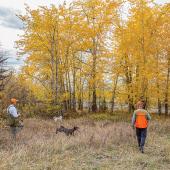Boot Up
How to keep your leathers in good shape.
“These boots are made for walkin’, and that’s just what they’ll do.” —Nancy Sinatra
A solid pair of leather boots is arguably the most important piece of gear for the serious outdoorsman. A good boot provides sturdy footing in the most rugged environments, and relays subtle feedback from the ground with every step you take. At best, a well-suited and cared-for boot will go mostly unnoticed as you traverse, through valleys, along ridges, and up and down steep gullies. At worst, a neglected, ill-fitted boot will be agonizing on the trail and quickly put an end to even the most well-planned adventures. Nowadays, a useful pair can cost a pretty penny, so you’ll want to take a few steps to protect your investment.
Essential Boot-Maintenance Items
Leather cleaner
Leather conditioner
Waterproofer
Extra laces or paracord*
Shoe cement
Needle and thread*
Moleskin*
Cleaning brush
Shop rag
*Consider keeping these items in your hiking pack
Dos & Don’ts
Do clean your boots after each use.
Don’t assume hot and dry days exonerate you from boot maintenance.
Do dry your boots out overnight.
Don’t leave them inches from a roaring fire.
Do pack a few essential boot-repair items in your trail-emergency kit.
Don’t assume your boots will never fail, no matter how well-maintained they are.
Do wipe off all excess conditioner and let it dry before use.
Don’t use excessive amounts of waterproofing or conditioning ointment.
25%: That’s the percentage by weight that leather can absorb in water before appearing wet.
It’s springtime and your boots are gonna get wet, no way around it. Once you’re done slopping through the muck, give them a good rinse and a gentle scrub. Let your loafers air-dry completely, keeping in mind when drying them near a heater or a fire that if it’s too hot for your skin, it’s too hot for your boot.
300,000 years: Earliest evidence of prehistoric humans using leather.
Early humans used animal oils, rendered from fat, to condition leather. Now, we have options ranging from natural pine-pitch blends to petroleum-based treatments. When applying any type of conditioner, rub the ointment in thoroughly and let it absorb into the leather for a few hours before wiping off the excess. How often you condition your boots depends on the amount of use, but also the time of year. In the wet spring and fall months, touch them up weekly. In the dry summer months, one treatment every few weeks should suffice.
100%: Pain and suffering preventable with new insoles.
The first thing you should do after purchasing a new pair of boots is toss out the insoles that come with them. It doesn’t matter what the boot cost—$250, $500, $700—factory insoles aren’t worth a damn. They’re flimsy, wear out quick, and simply don’t have the support your feet require. Get a pair of good-quality commercial insoles—Superfeet are a popular choice—or spend a few extra bucks on custom-molded inserts. Just like how hunters say the scope is equally as important as the rifle, well, same goes for boots and insoles.
6%: Of a cow’s mass is in its hide.
At some point, home remedies will be no match for the wear and tear your boots have endured, and the outsole will be the first thing to fail—usually long before the leather itself wears out. A cobbler can replace the sole and otherwise refurbish your boot, saving you money. Save a cow, resole a boot.
Pro Tip
by Jeff Carter, Carter’s Cobbler Shoppe
A new leather boot is like skin—going from wet to dry and dry to wet cracks and damages it. And, just like skin, lotion keeps leather conditioned and healthy. A new boot generally doesn’t need much care, but it will help to apply some conditioner right off the bat to ensure it’s prepared for the harsh Montana conditions. After a long day out in the elements, be it mud, heat, water, or all of the above, dirt and grime can find their way into the leather’s pores and if left untreated, will lead to cracking and eventually tearing. Cleaning your boots is equally as important as conditioning them to ensure their longevity.

